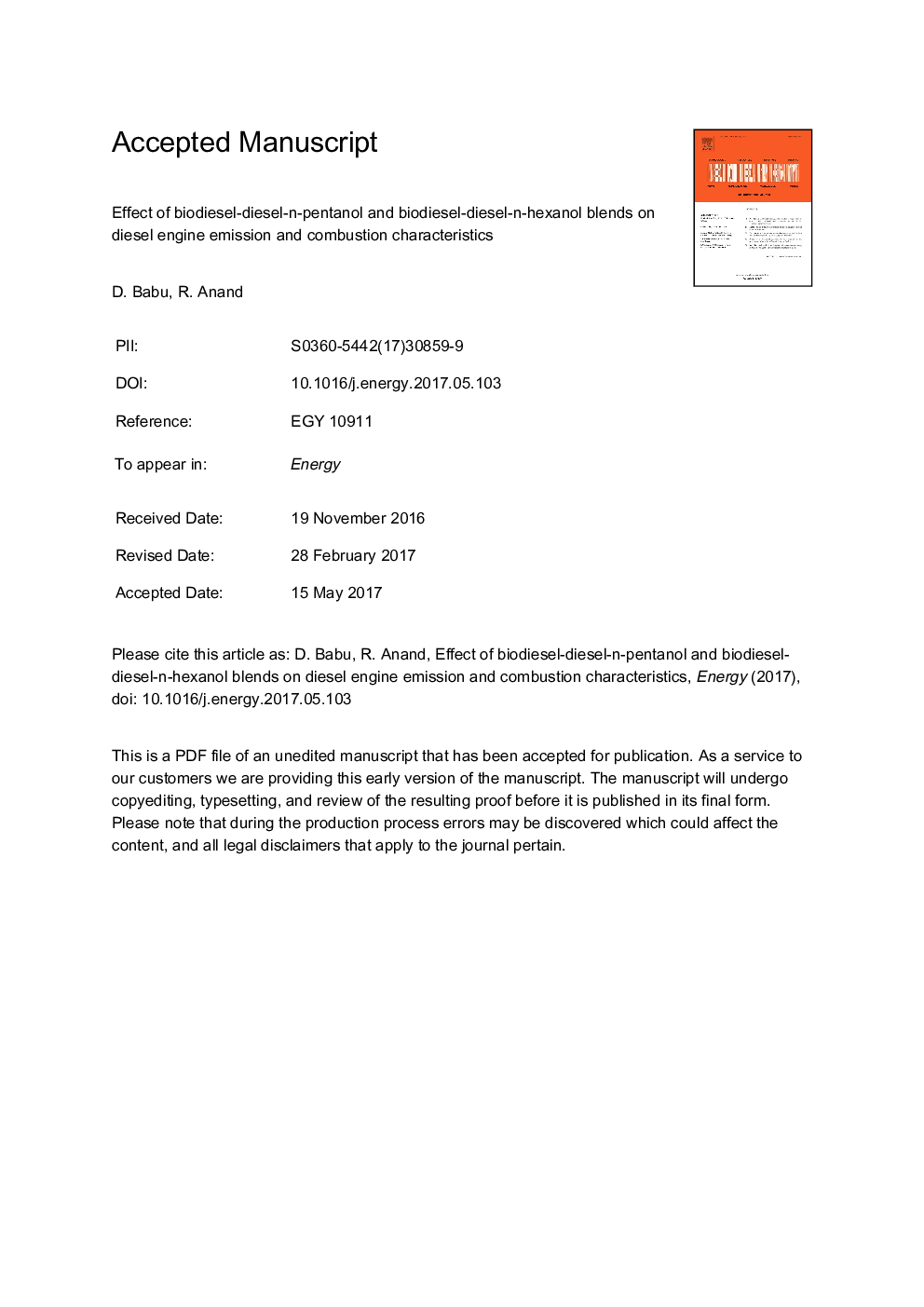| Article ID | Journal | Published Year | Pages | File Type |
|---|---|---|---|---|
| 5476595 | Energy | 2017 | 51 Pages |
Abstract
The aim of this paper is to analyse the combustion, performance and emission characteristics of diesel engine fuelled with biodiesel-diesel-n-pentanol and biodiesel-diesel-n-hexanol blends without engine modification. The fuel constituents were varied between 0 and 100% in the range of 5%. In this, above 75% of biodiesel content, 5% of diesel and less than 20% of n-pentanol and n-hexanol content were selected. Based on the fuel characterization, B90-D5-P5, B85-D5-P10, B90-D5-H5 and B85-D5-H10 were selected for further experimental investigation. The lowest brake specific energy consumption of 12.64 MJ/kWh was obtained for B90-D5-H5 blend at full load condition. The maximum brake thermal efficiency of 31.0% was obtained in B90-D5-H5 blend. The B85-D5-H10 fuel has a maximum heat release rate of 44.53 J/°CA. The lowest carbon monoxide emission of 0.74% vol. was obtained from B85-D5-P10. At 100% load, least unburned hydrocarbons emission of 74 ppm was obtained in B85-D5-P10 blend. The maximum nitric oxide emission of 910 ppm was obtained in B85-D5-H10. Among the above mentioned blends B85-D5-P10 blend has the minimum emission of CO, UBHC and FSN. Thus, this paper discusses the viability of recommending biodiesel-diesel-alcohol blends to fulfill the future energy demands of the world.
Related Topics
Physical Sciences and Engineering
Energy
Energy (General)
Authors
D. Babu, R. Anand,
